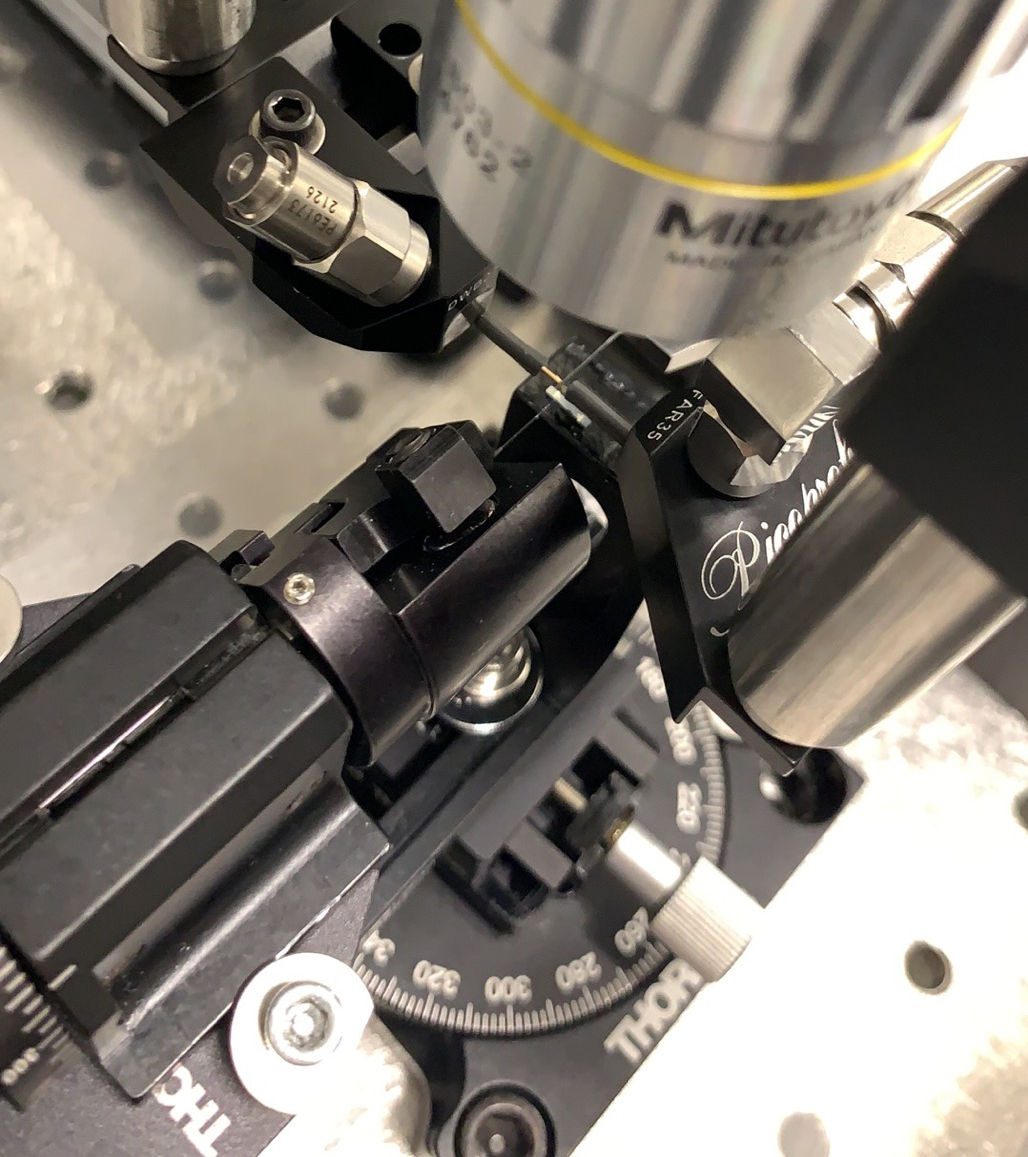Engineered Second-Order Nonlinearity in Silicon Nitride.

Silicon nitride (Si3N4) is a low-loss, CMOS-compatible material platform widely used in integrated photonics. Si3N4 films deposited in the foundry, usually through low pressure chemical vapor deposition (LPCVD) or plasma enhanced chemical vapor deposition (PECVD), are amorphous (therefore, centrosymmetric). Such symmetry leads to a lack of second-order nonlinearity (χ(2)) in Si3N4 which keeps it from key active functions such as Pockels electro-optic (EO) modulation and efficient second harmonic generation (SHG). We overcome this drawback and demonstrate a successful induction of χ(2) in Si3N4 through electrical poling with an externally-applied field to align the Si-N bonds.
This alignment breaks the centrosymmetry of Si3N4, and enables the bulk χ(2). The sample is heated to over 500°C to facilitate the poling. The comparison between the EO responses of poled and non-poled Si3N4, measured using a Si3N4 micro-ring modulator, shows an enhancement in the amplitude of the measured EO responses as well as a remarkable improvement in its speed from 3GHz to at least 15GHz (3dB bandwidth) after the poling, which confirms the χ(2) nature of the EO response induced by poling. This achievement paves the way for realizing high-speed EO modulation and all types of χ(2)-related functions on a pure Si3N4 platform, allowing monolithic integration of photonics and CMOS electronics for photonic integrated circuits (PICs), LIDAR, data communications, and quantum optics.
PAPER
Zhang, Yi, et al. “Engineered second-order nonlinearity in silicon nitride.” Optical Materials Express 13.1 (2023): 237-246. https://opg.optica.org/ome/fulltext.cfm?uri=ome-13-1-237&id=524458



